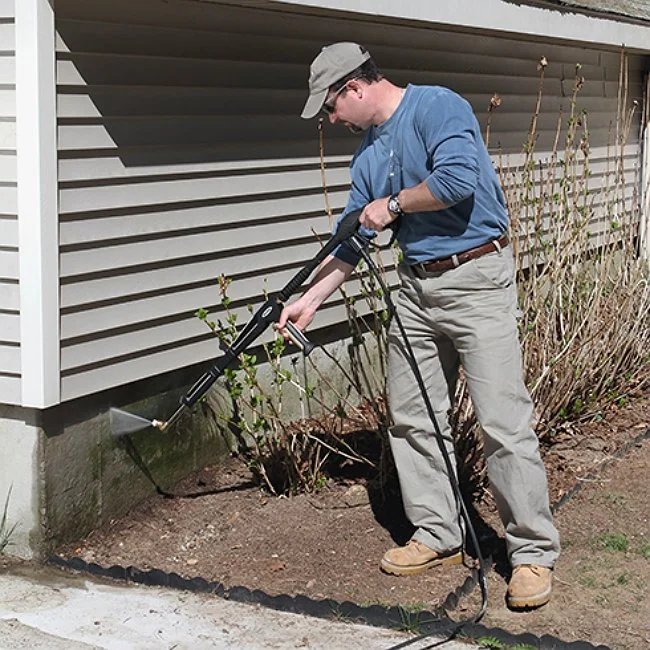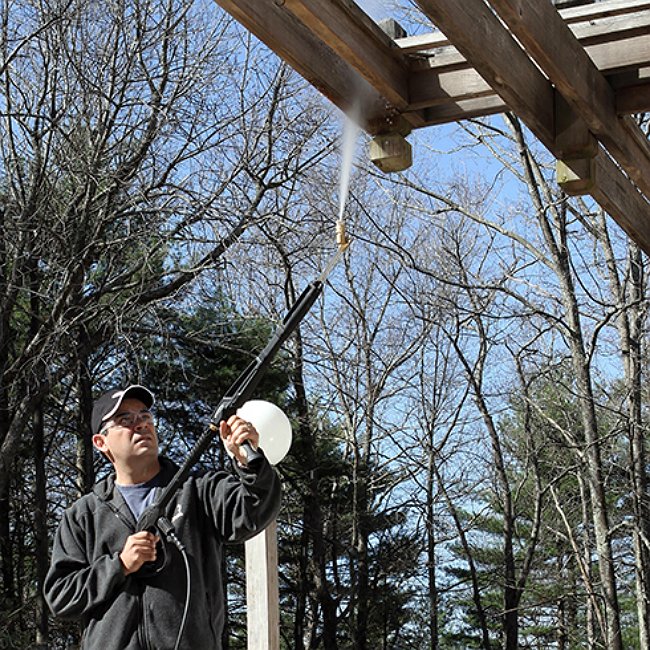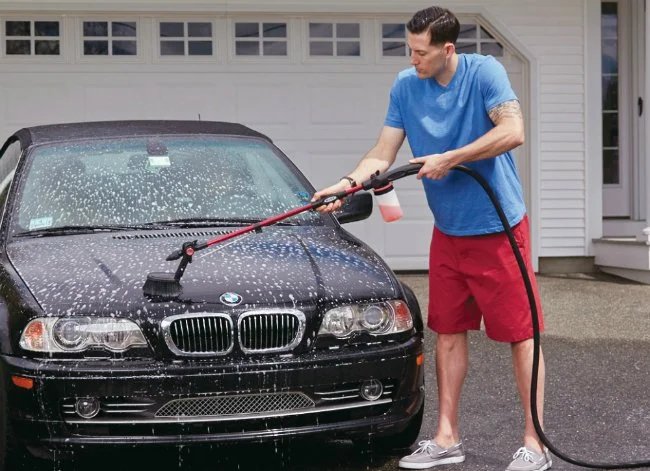

We may earn revenue from the products available on this page and participate in affiliate programs. Learn More ›
It’s tough to get excited about outdoor cleaning projects when you’d rather be at the lake or on the golf course. Fortunately, the right time-saving tools can help you squeeze both your around-the-house tasks and recreational activities into a single weekend. Refreshing a dirty deck, cleaning mold from patio furniture, removing packed mud from tire wells—all these can be done more quickly and efficiently when you break out a pressure washer. This handy machine uses up to 80 percent less water than the average garden hose while packing more than 50 times the power!
But not all pressure washers are equal, nor is one suitable for every outdoor chore. And it’s important to use this tool properly to ensure satisfying, damage-free results. Whether you’re in the market for a powerful, game-changing cleaner or you already have one in your home-care arsenal, make note of these best and worst practices so you can be sure to get the most from this lean, mean cleaning machine.
DO Prep Before Starting
Without an adequate water supply, your pressure washer will fall short of your expectations for efficiency. First, test the water flow from your hose by timing how long it takes to fill a five-gallon bucket. If it takes two minutes or less, you’re good to go; longer than that indicates that there’s not enough water flow to operate the washer. Once you’ve determined that you have sufficient water flow to feed your pressure washer, clean out its inlet filter and check that the connections are secure wherever the tool attaches to a hose or accessory, such as the twist-on Pivot Nozzle Wand from Hyde Tools, which facilitates easy maneuvering during cleaning chores.

DON’T Underestimate Its Power
A pressure washer’s biggest strengths—speed and power—make this tool as dangerous as it is efficient. Case in point: The water stream from even those models with psi’s on the lower side is forceful enough to cut through human skin! Save yourself and your property from harm by putting on safety goggles, gripping the wand tightly to avoid recoil when the pressure kicks in, and starting on the lowest pressure setting. Work in sweeping motions so that you’re never concentrating the tool’s power in one place for too long—and always aim the nozzle away from people, pets, and your prize peony bush.
DON’T Use One Nozzle Tip for Every Job
You can fit a pressure washer with a variety of nozzles that produce everything from wide-spray patterns to narrow streams so you can better harness the water for the job at hand. Rule of thumb: The more narrow the spray, the more force it delivers. A wide, 40-degree nozzle works well for general washing, such as loosening dirt on redwood or cedar decking, cleaning siding, and rinsing outdoor furniture. A 25-degree nozzle tip will tackle dirt and grime on concrete and other types of masonry. Zero- or 15-degree nozzle tips concentrate intense pressure on a small area, making them most useful for removing stubborn stains from iron.
DO Adjust Your Spray’s Angle for Best Force
When stubborn stains require maximum cleaning power, you want to keep the pressure washer’s nozzle perpendicular to the grimy surface. Sounds easy enough, right? Well, it is—until you need to reach the underside of a patio table or the siding along the top of a house. Fortunately, the problem-solving Pivot Nozzle Wand from Hyde Tools eliminates the need to bend or overextend for these harder-to-reach areas. Each of its models—the 18-inch wand for electric pressure washers and the 28-inch one for the heavier-duty, gas-powered machines—features extra control via an adjustable nozzle. A simple twist of the handle rotates the spray within a 90-degree angle so you can direct the force of your pressure washer’s stream over, under, or around any dirty object. No more squatting, stretching, or straining to achieve the appropriate spray angle.
DO Ease Into the Job
A blast that is too direct can damage even those surfaces you’d expect to hold up well to a washing, so you always want to start with a light touch. Take, for instance, siding: Pressure washers excel at cleaning most types, but stand too close and you risk blasting off some of the paint or ruining softer wood like cedar. For best results in pressure-washing, position yourself 10 feet away from the surface you’re cleaning, turn on the water, then step forward until the spray is just forceful enough to remove dirt.

DON’T Use a Pressure Washer for Everything
Even with extreme care and lowest pressure, not all items are suitable for pressure-washing, particularly if they already show signs of wear and tear. For example, while most automobile paint jobs can withstand strong spray, a thin clear coat or scratched exterior should be cleaned using lower water pressure. To tackle this and other similar outdoor chores, disconnect the pressure washer from your garden hose and swap in a HYDE PivotPro™ Water Wand, which features a detergent reservoir and an adjustable nozzle to save you from unnecessary exertion and back-bending contortions. Plus, different PivotPro™ models come equipped with handy, interchangeable brushes attached to the front end. The Boat & Auto kit includes a soft-bristle brush, a spindle brush for cleaning wheel rims, and a microfiber-pad that will pamper your car’s exterior while you remove dirt and road grime.
DO Master the Correct Washing Technique
Caked-on gunk comes off more easily if you first soak the surface, with or without detergent, and let it sit for a few minutes. When using detergent, wet from the bottom up, using sweeping horizontal strokes to prevent streaks caused by runoff. To rinse, do the opposite, working from the top down so you don’t miss any cleanser.
This post has been brought to you by Hyde Tools. Its facts and opinions are those of BobVila.com.
